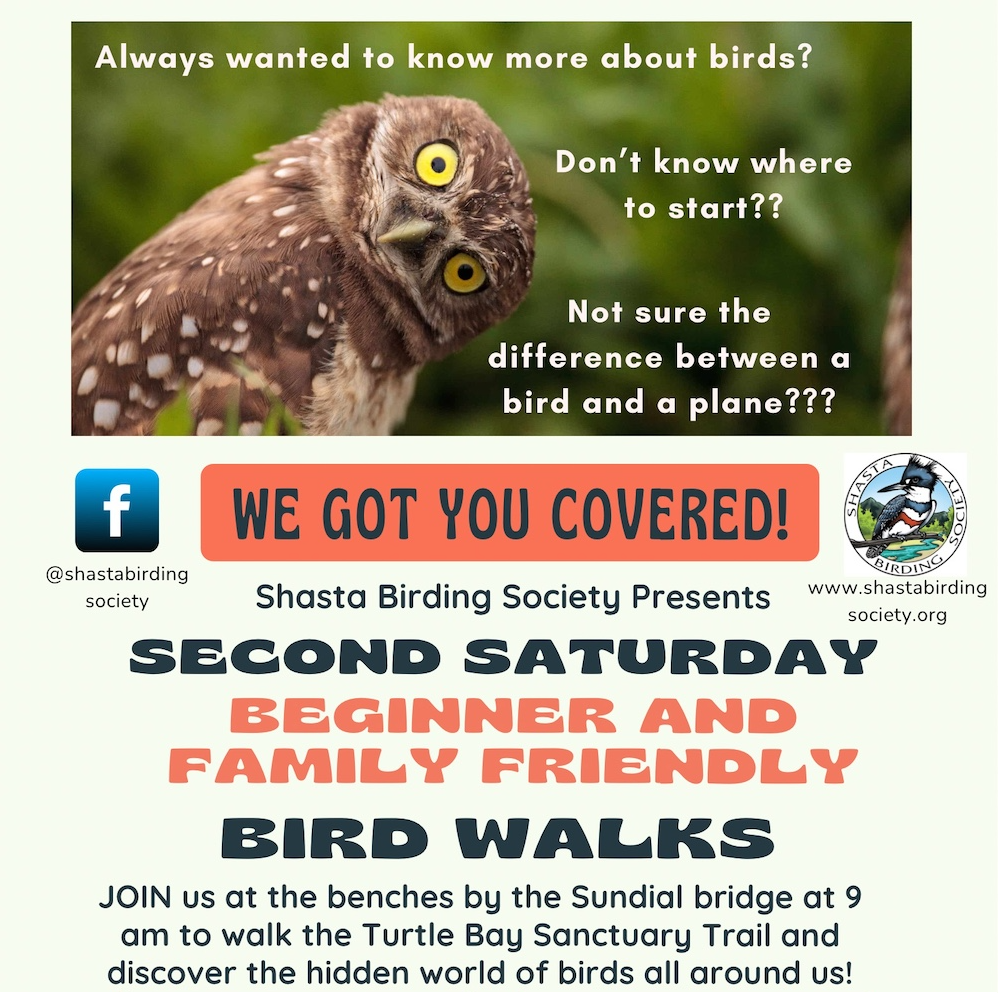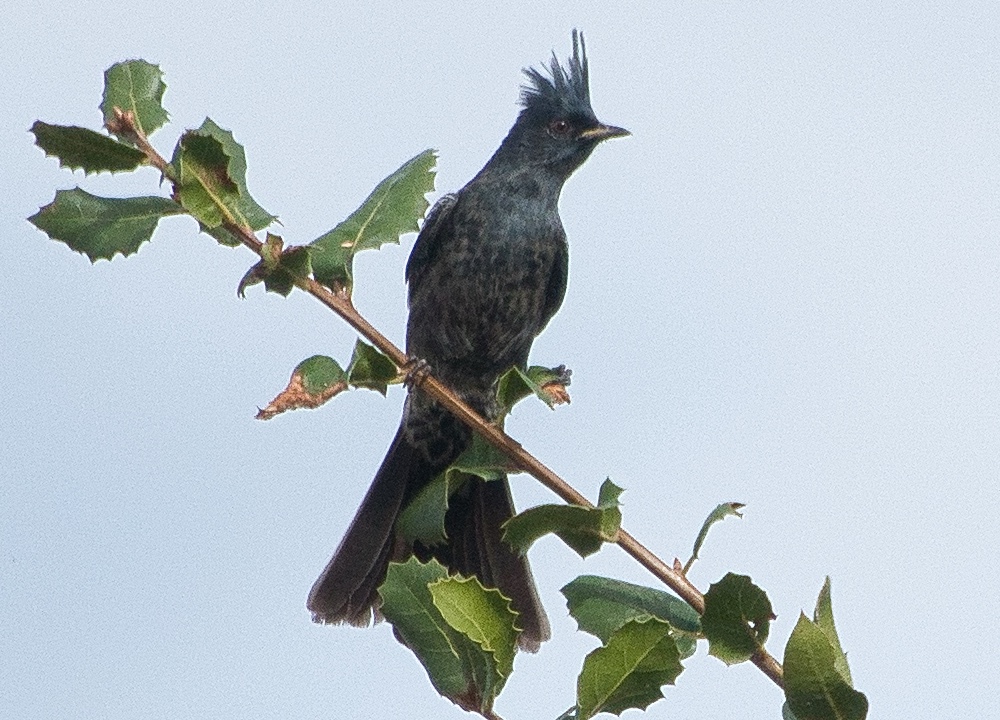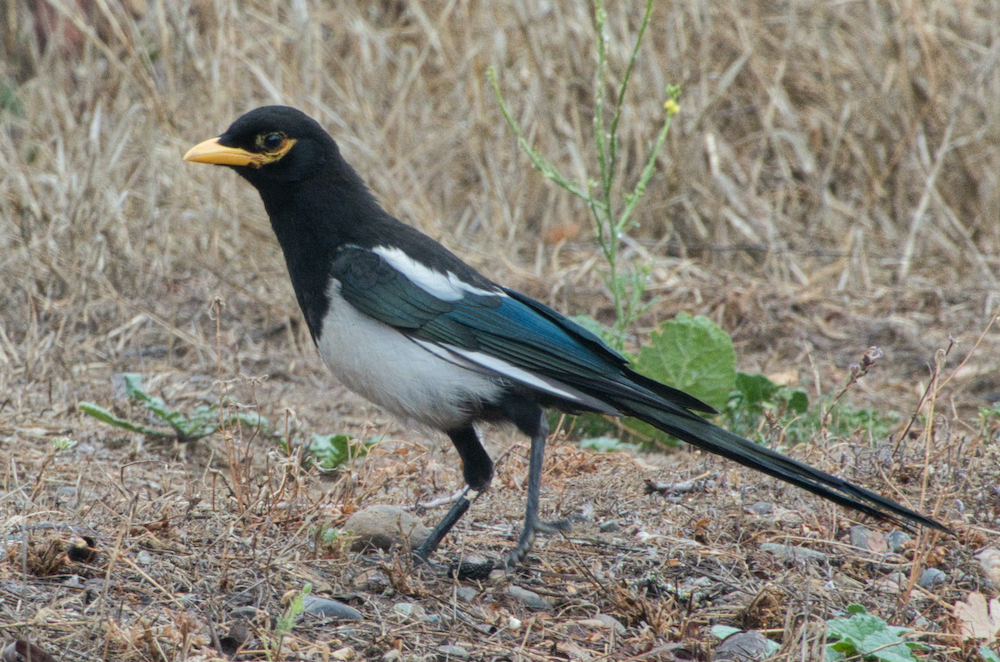
Always wanted to learn more about birds but not sure where to start? Join Shasta Birding Society for a family and beginner friendly bird walk at the benches by the Sundial bridge at 9 am to walk the Turtle Bay Sanctuary Trail and discover the hidden world of birds all around us! The trail is wheelchair accessible and benches are found throughout. The walk will last about an hour. Binoculars are provided. Join Rebeca Ladrón de Guevara as we take a leisurely one mile walk along the Turtle Bay Sanctuary Trail. This walk will begin at the south end of the Sundial Bridge and take us along the Sacramento River to view waterfowl, woodpeckers, raptors, sparrows, and more. One of the best attributes of this trail is that we cannot only enjoy the excellent views along the river, on the other side of the trail we will be able to find several species of songbirds. Raptors are common in the area, including the Bald Eagle and Osprey. Park in the Turtle Bay Parking Lot. Rain cancels.


